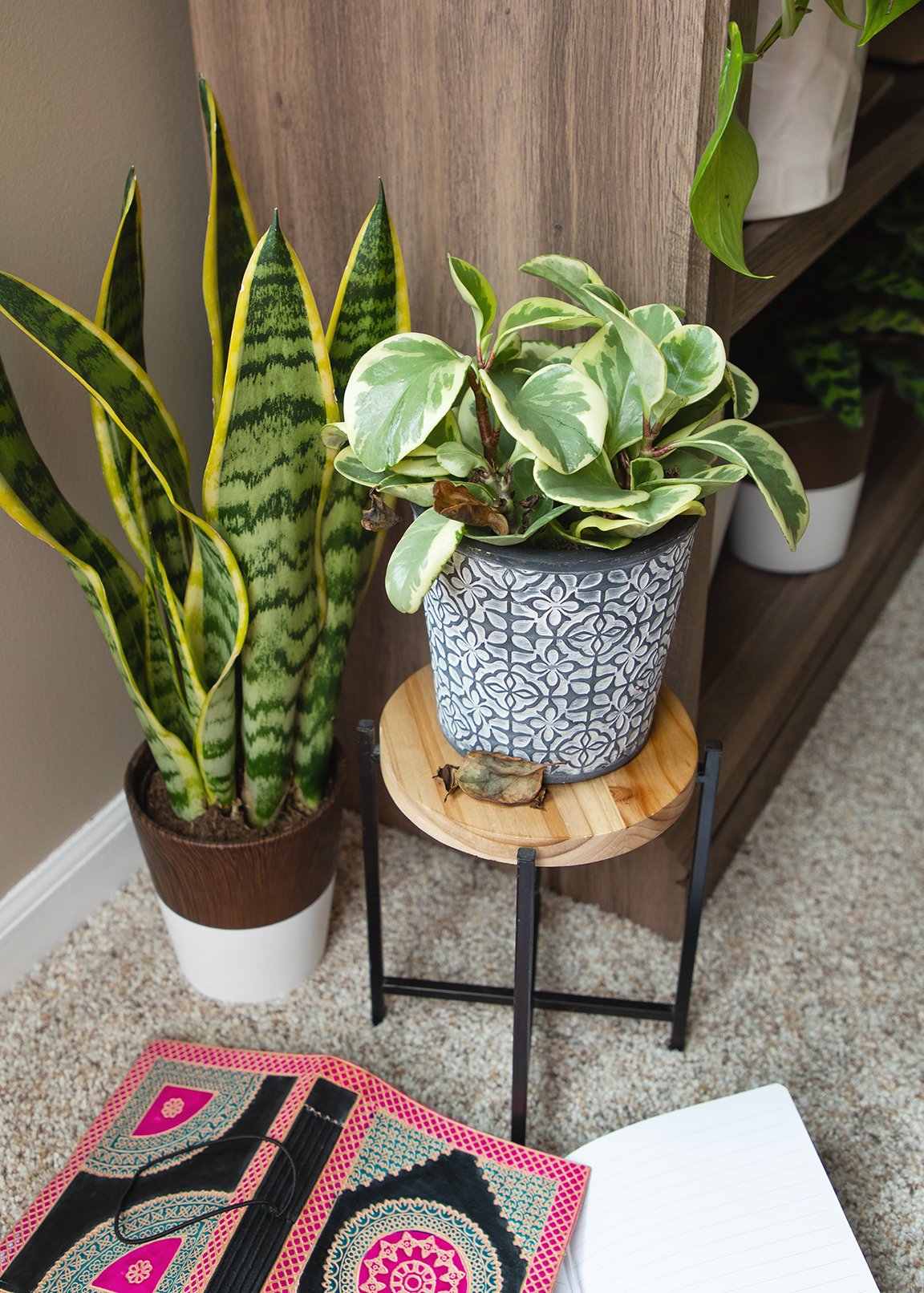What’s Causing my Plant to Lose Leaves in the Winter?
It’s winter, and that means less light overall and lower light quality. This usually means dormancy and maybe even a little leaf drop.
What is Leaf Drop?
Leaf drop is just what it sounds like - your plant drops some leaves. Sometimes leaf drop affects older leaves, but it can even affect healthy new growth.
What Causes Leaf Drop?
Leaf drop can occur in many situations but is fairly common in winter due to low light and changes in temperature. Even water levels and humidity can stress your plants and cause leaf drop. Unfortunately, it’s just a rough time of year for your indoor buddies!
In general, winter is tough on indoor plants, since natural light levels are low and home temperatures are cooler.
How to Prevent Leaf Drop
If your plants are near a window, they should be moved further indoors because windows can get drafty in the cold weather! If there isn’t a good place for your plants to get sunlight and stay warm inside, consider a grow light that will help keep them happily photosynthesizing until spring arrives.
Keep in mind that changes in temperature or exposure to drafts both hot and cold can affect your plants. Move plants away from heating vents as well as those drafty windows. Aim to keep your plants at a consistent temperature range between 65-85 degrees Fahrenheit. If you tend to turn the heat down at night, make sure it stays above 55 for your plants. And if you’re expecting extreme cold fronts, keep the heat up 2-4 degrees higher than normal just to add a buffer against inevitable heat loss due to the sudden weather changes.
Winter Plant Care Tips
As usual, keep your plants in bright but indirect light and at a consistent temperature as outlined above. When it comes to water and humidity, you will probably need to back off your usual routine. According to our grower:
It’s important to remember that plants still need water during the cooler months of the year. Plant owners should check the soil and respond with water as they would at other times of the year, recognizing the irrigation frequency will be lower.
So your plants will likely need less water than usual because of the cooler overall temperature.
You may also want to set up a humidifier, a DIY humidity pebble tray, or group your plants together in the winter to boost the humidity levels. If your lips are chapped and you’re reaching for the lotion, your plants are probably feeling the winter dryness too!
Leaf Drop in Specific Plants
We asked our grower about two plants that are especially prone to winter leaf drop, the Fiddle Leaf Fig and the Alocasia. These plants are known to need a little extra attention.
Alocasia leaf drop is likely due to cool temperature and low humidity, in addition to lack of sunlight. You can look into a grow light and humidifier to help it thrive in the colder months.
We provide additional heat and humidity to Alocasia in the greenhouse, so it makes sense that these plants struggle during winter, when temps and humidity are much lower in the home.
Fiddle Leaf Fig plants are prone to shock when they are moved from their favorite spot, but our dwarf Fiddle (Ficus lyrata bambino) is less fussy. However, it may still be a little grumpy if it has a change of scenery for the winter, and Fiddles also get particular about their water and humidity levels. Fiddle Leaf Fig leaf drop can be addressed similarly to Alocasia leaf drop, with additional lighting and humidity provided for plant health.
Other Causes of Leaf Drop
If your plant is dropping leaves that are yellow, brown, or spotted before they fall, there’s another culprit than just old man winter.
Root rot can cause leaf drop and often displays dark brown or black spots on the leaves. If you see spots, check your roots - you may be overwatering. Remember that watering plants in winter means you water less often. Root rot can also be caused by lack of light, so additional grow lighting may help avoid this issue too.
Underwatering can cause leaf drop as well, due to the plant not getting enough water to survive. If this is the case, you’ll see some dried out edges on your leaves, or completely dried and shriveled leaves. Make sure to keep the top inch or two of your plant’s soil thoroughly moist when you water.
Got Leaf Drop Questions?
Let us know, and if we don’t know the answer right away, we’ll check with our team of experts in the greenhouse and get back to you. Stay warm out there!









